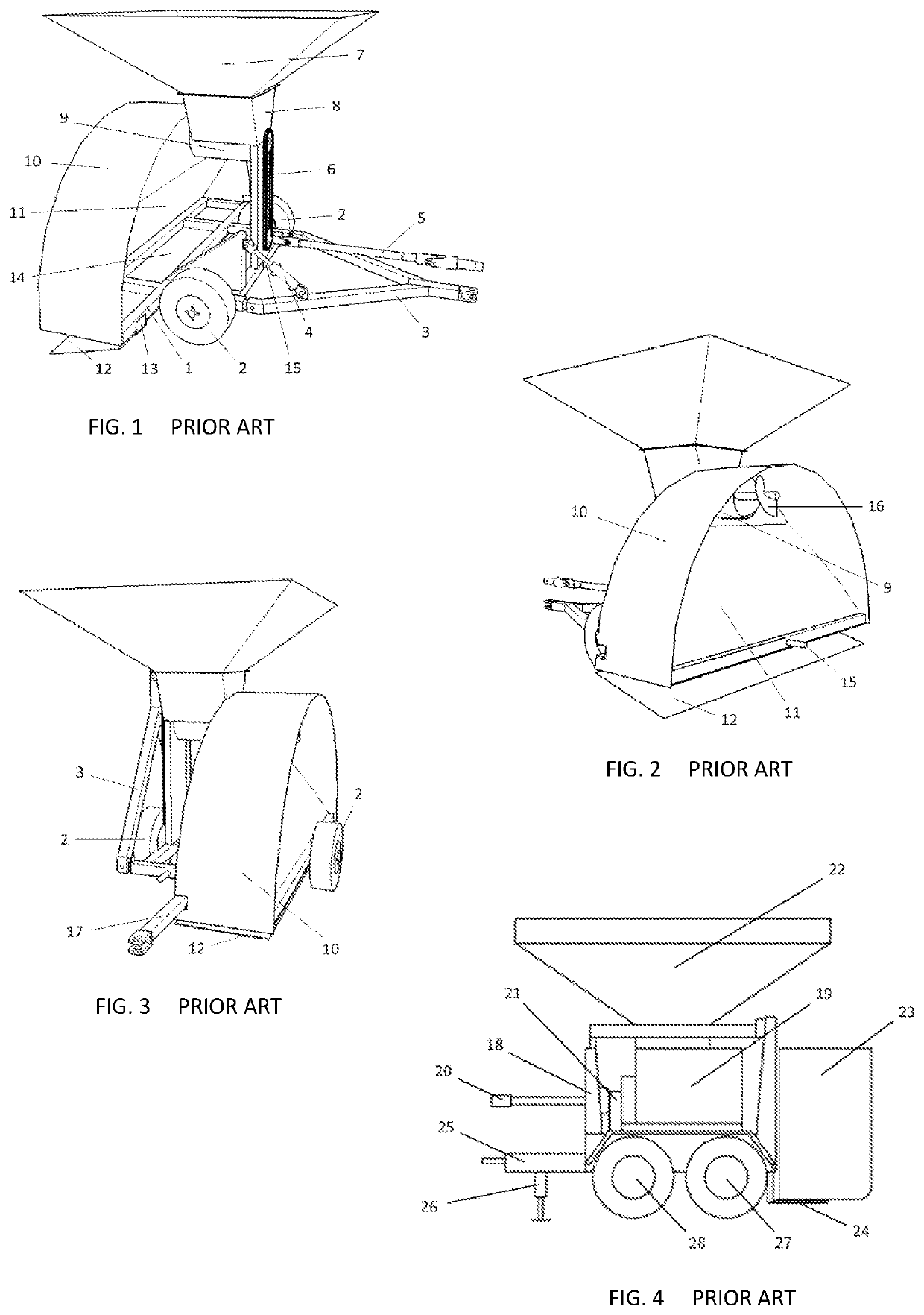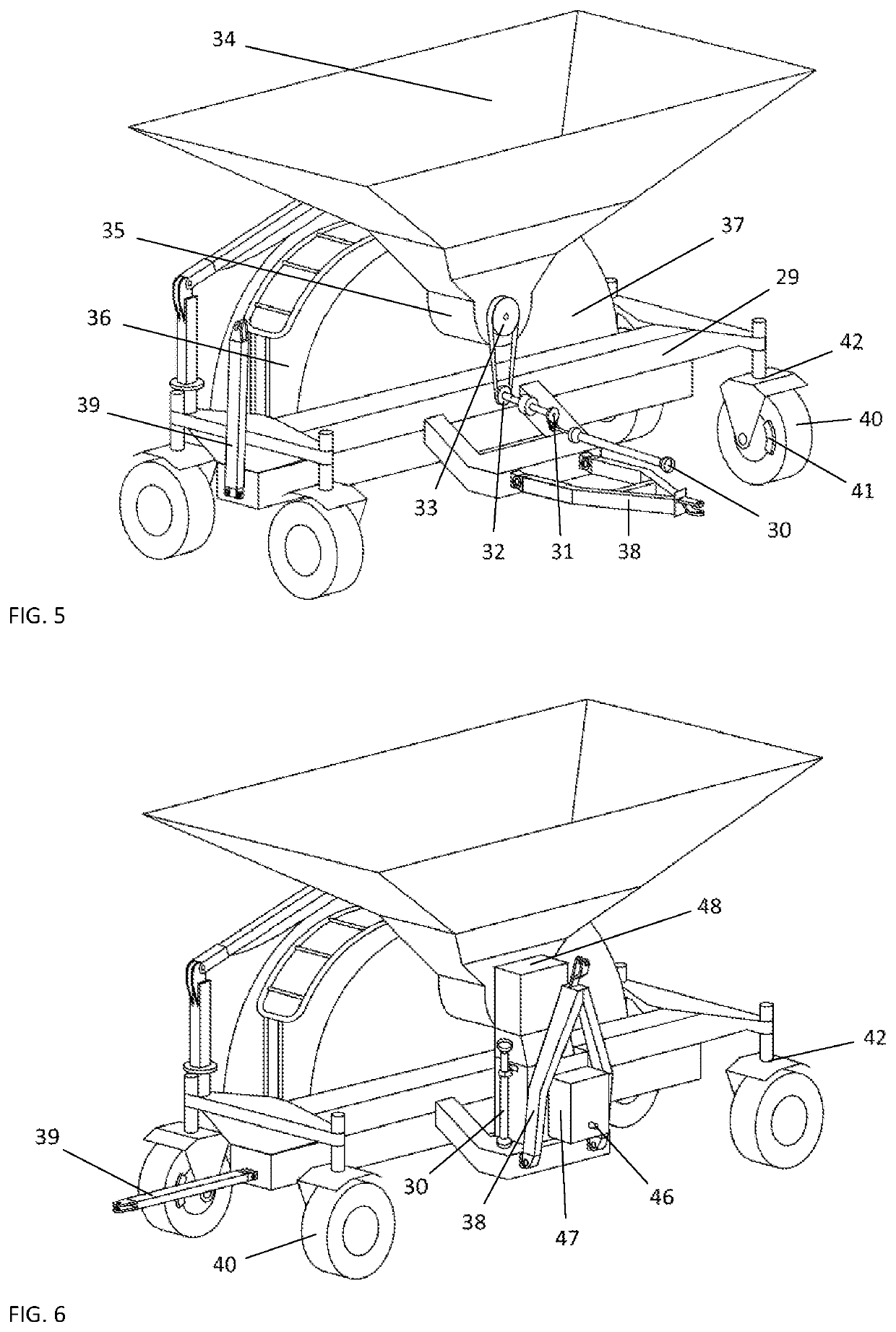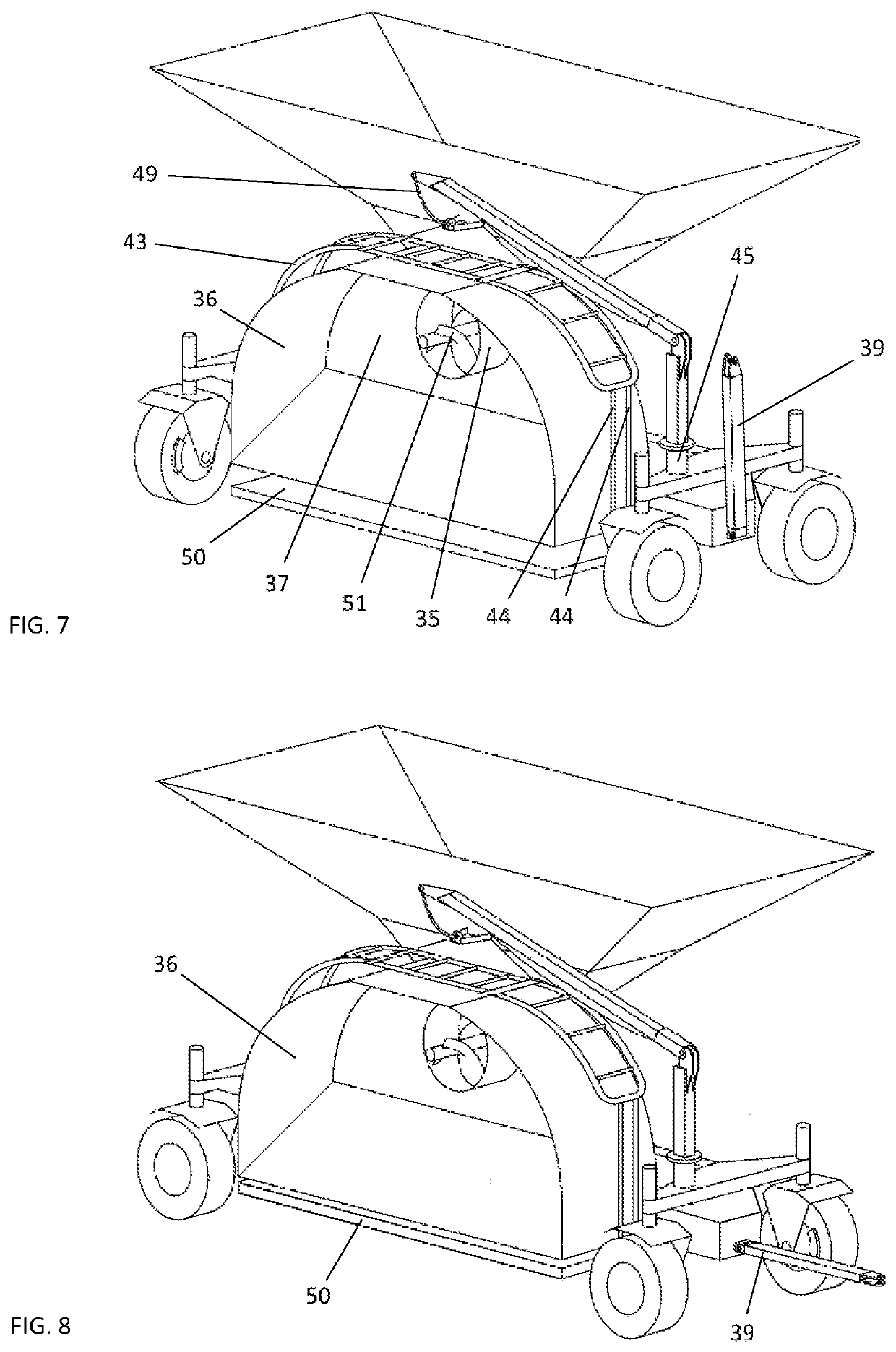Self-trailering grain bagging machine on four wheels
a grain bagging machine and self-trailing technology, applied in the field of grain bagging machines, can solve the problems of placing undue weight on the tractor or vehicle, and achieve the effect of optimizing labor and enhancing overall braking effectiveness
- Summary
- Abstract
- Description
- Claims
- Application Information
AI Technical Summary
Benefits of technology
Problems solved by technology
Method used
Image
Examples
example b
[0028]When bagging on a slope, tractor and bagger may not be able to operate transversally across it and be restricted to running either up or down the gradient. If running upward, the weight of the machines will normally help to compact the material, but if slope angle is excessive it can produce too much compaction in the bag even without applying brakes. In such circumstances and being forced to run downward, the situation is reversed and very efficient braking action will be required to compact the material adequately, in which case four wheels will perform better than two.
example c
[0029]Even when bagging under normal conditions over firm terrain, braking power distributed among more brakes can optimize labors. Sometimes the bagger brakes are set to apply high pressure on the discs in order to pack the grain more firmly, causing the brakes to seize up when brake calipers press so hard against the brake discs that these don't turn. This often results in short lapses in which the wheels do not rotate and tractor and bagger do not advance while the bag continues to expand as the compression screw keeps pushing grain in. As pressure mounts inside the bag, the pent-up energy abruptly overcomes brake resistance and then the tractor / bagger combo jumps forward, whereupon the cycle iterates. These intermittent cycles create humps on the bag's top section that reflect spots of higher and lower compaction. In a worst case scenario, if brakes remain stuck the incoming grain can very rapidly cause bag rupture and material loss. In the present disclosure this unwanted effec...
PUM
 Login to View More
Login to View More Abstract
Description
Claims
Application Information
 Login to View More
Login to View More - R&D
- Intellectual Property
- Life Sciences
- Materials
- Tech Scout
- Unparalleled Data Quality
- Higher Quality Content
- 60% Fewer Hallucinations
Browse by: Latest US Patents, China's latest patents, Technical Efficacy Thesaurus, Application Domain, Technology Topic, Popular Technical Reports.
© 2025 PatSnap. All rights reserved.Legal|Privacy policy|Modern Slavery Act Transparency Statement|Sitemap|About US| Contact US: help@patsnap.com



